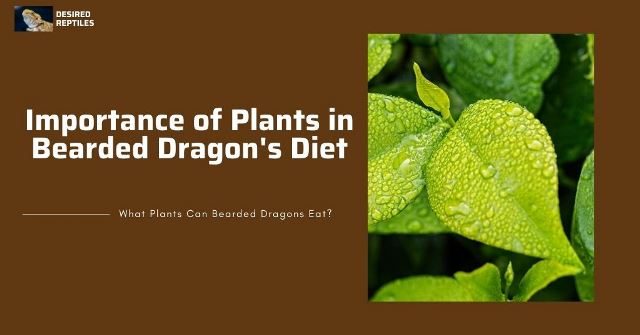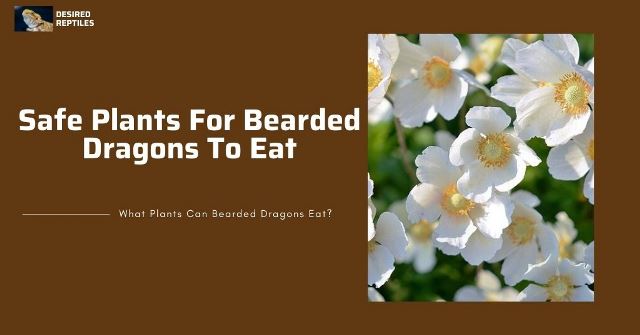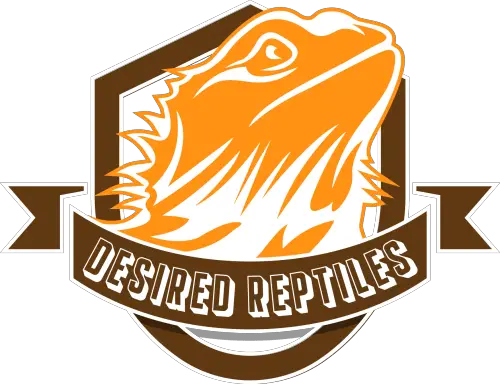Wild bearded dragons have limited plant options compared to the variety available to captive ones. However, even pet dragons face restrictions on some foods. This leads us to understand exactly which plants are suitable for your beardie and why.
Bearded dragons can eat plants like nutritious vegetables, fruits, flowers, and herbs as long as they are low in sugar, goitrogen, phosphorus, oxalic acid, and persin. If nutrition is prioritized, your pet can safely enjoy a wide range of treats.
We’ll be evaluating the plants bearded dragons can eat to help you know the best options to feed your pet. Let’s dive into it!

5 Reasons Why Bearded Dragons Need a Plant Diet
Bearded dragons need plant matter to survive. In fact, they become more herbivorous at maturity; for adult beardies, 70% of their food ration is made of greens and the remaining 30% of insect proteins.
1. Plants are Sources of Essential Vitamins
Beardies can’t synthesize most vitamins or get them from insects. Instead, they rely on nutrient-rich plants such as dandelion, mustard, and collard greens. In the wild, bearded dragons may eat non-toxic bushes and grasses such as spinifex and dandelions which help them maintain a balanced diet.
2. Plants Provide Minerals for Beardies
Minerals help the body use vitamins more effectively supporting metabolism and growth. Calcium, for instance, is one of the most important minerals required for bearded dragons’ bone development. Although it can be obtained from insects, you must complement it by feeding your pet nutritious veggies and further dusting them with calcium supplements to improve its general health.
3. Plants Help in Reproduction
Your pet needs minerals and vitamins to synthesize or regulate the formation of hormones. Without enough greens, your dragon may struggle to reproduce or end up laying deformed eggs. Since wild bearded dragons supplement by eating small rodents and smaller reptiles, they manage to reproduce healthily without a consistent plant diet.
4. Plants Help Bearded Dragons Hydrate
Bearded dragons are desert-dwelling animals. As water is scarce, they may rely on plants for hydration and proper digestion. In captivity, vegetables often become the primary source of hydration since some dragons hardly use their water bowls anyway.
5. Bearded Dragons Enjoy Eating Plants
Added to the nutritional benefits of plants, beardies love their greens – the different scents and textures give them something to enjoy as they’re particularly omnivores. Bearded dragons naturally appreciate a diversified diet.
Toxic Plants Bearded Dragons Should Avoid
Not all plants, even those safe for humans, are suitable for bearded dragons to consume. Some can be poisonous or damaging to their well-being, especially when they contain the following in high amounts:
Oxalic Acid
Oxalic acid is an organic chemical found in plants like rhubarb, spinach, beets, avocados, and mushrooms. It binds to calcium thereby hindering absorption and utilization. You have the proper means to metabolize or excrete oxalic acid, but your beardie, on the other hand, is not equipped with such a mechanism. If bearded dragons continually consume oxalic acid in high amounts, they can end up with metabolic bone disease or impaction from the accumulation of oxalates.
Persin
Persin is a fatty substance primarily found in avocados, shea butter, and cashew nuts. It can be particularly toxic to bearded dragons in excess, even extending to dogs and cats. Excessive persin ingestion may cause neurological disorders leading to a rise in blood pressure, including digestive complications and damage to the immune system.
Excessive Phosphorus
Plants like cabbages, broccoli, radishes, and potatoes are high in phosphorus which can be toxic for bearded dragons. Phosphorus, similar to oxalic acid, binds to calcium disrupting absorption and bone development. Ideally, your pet should only eat plants with a calcium-to-phosphorus ratio of 2:1 to prevent calcium deficiency.
Goitrogens
Plants like kale, bok choy, horseradish, pineapples, avocados, peaches, and basil contain goitrogens in varying levels that can harm your pet over time. Goitrogens can interfere with thyroid function causing a hormonal imbalance. Thyroid imbalance can then facilitate unusual growth of the limbs described as hypothyroidism.

4 Safe Plants Bearded Dragons Can Eat And Enjoy
Preparing a suitable bearded dragon plant diet is key to ensuring a good, long life. Remember, captive beardies often outlive their wild counterparts for a reason, one of which is an ideal diet.
Vegetables (Staples)
Nutritious vegetables are the safest and healthiest category of plants to feed captive beardies. They can be divided into two sections: staples that should be provided consistently, and occasional veggies to be fed in smaller amounts every other day.
Examples of safe vegetables to feed your bearded dragon:
- Collard greens
- Mustard greens
- Dandelion greens
- Butternut squash
- Turnip greens
Examples of occasional vegetables to feed your bearded dragon:
- Yams
- Pumpkin
- Sprouting lentils
- Carrots
- Bell peppers
- Green beans
Fruits (Treats)
If you have spent time with beardies, you’d know just how much they love fruits. Some even have preferences and eagerly seek them during feeding time. While it’s tempting to treat your beardie its favorite fruit, be aware that it can be hazardous in excess.
Fruits often contain high levels of sugar, phosphorus, acidity, and goitrogens which can cause your dragon to fall sick. It’s crucial to identify which ones are beardie-safe to avoid jeopardizing your pet’s life. Use the table below to differentiate these fruits.
| SAFE ZONE FRUITS | DANGER ZONE FRUITS |
|---|---|
| Blackberry | Avocado |
| Blueberry | Lemon |
| Apple | Lime |
| Banana | Rangpur |
| Strawberry | Tangelo |
| Peach | Passion fruit |
| Mango | Calamansi |
| Papaya | Grapefruit |
| Fig | Kiwi |
| Prickly pear | Raspberries |
Flowers (Treats)
Flowers like hibiscus, dandelions, and geraniums are a great way to add nutrients to your beardie’s meal while enticing feeding. Regardless, flowers are a delight and should only be given occasionally to prevent health issues.
Herbs (Treats)
In addition to fruits and flowers, herbs can make good treats when used properly. Most of them are rich in vitamin C and can be safely consumed without the risk of high acidity. However, most herbs are phosphorus and goitrogen-dense making them less ideal.
Examples of herbs beardies can safely consume:
- Basil
- Cilantro
- Rosemary
- Chicory
- Fennel
Creating a Nutritious Plant Diet for Your Bearded Dragon
Your dragon’s plant diet should primarily consist of staple vegetables. The occasional plants like flowers, herbs, or fruits can serve as toppings to make feeding more enjoyable for your pet.
Additionally, your pet’s dietary needs will change as it ages. Bearded dragons under 6 months old require more protein than greens. Contrarily, adult bearded dragons need a greater proportion of greens compared to protein.
The table below will guide you on how to feed your dragon properly.
| Age (months) | Percentage |
|---|---|
| 0 – 3 (Baby stage) | 30% greens, 70% grubs |
| 3 – 6 (Juvenile stage) | 30% greens, 70% grubs |
| 6 – 9 (Subadult stage) | 40% greens, 60% grubs |
| 9 – 12+ (Adult stage) | 70% greens, 30% grubs |
Are Dried Plants Safe for Bearded Dragons?
Dried veggies, fruits, and herbs are dangerous for bearded dragons. They are usually too sweet and dry making them difficult to digest. Your pet can get impacted by eating dried plants, so it’s best to avoid them. It’s crucial to provide fresh plants for your pet to meet its nutritional needs.
Can I Feed My Dragon Cooked Plants?
Yams, carrots, and butternut squash can be blanched (lightly steamed and cooled in ice water) to make them easier for dragons to chew and digest. Be careful not to overcook them as this can remove the nutrients. Your pet’s meals should provide complete nutrients to avoid malnutrition. Cooking its greens only goes against that motive.
Are Canned Greens Compatible With Bearded Dragons?
Canned food often contains preservatives and other chemicals that can harm your dragon. It puts unnecessary stress on their digestive systems which can lead to induced lethargy and brumation. Since they’re dangerous to feed, it’s much healthier and preferable to stick to fresh plants so that your dragon is not exposed to these complications.
